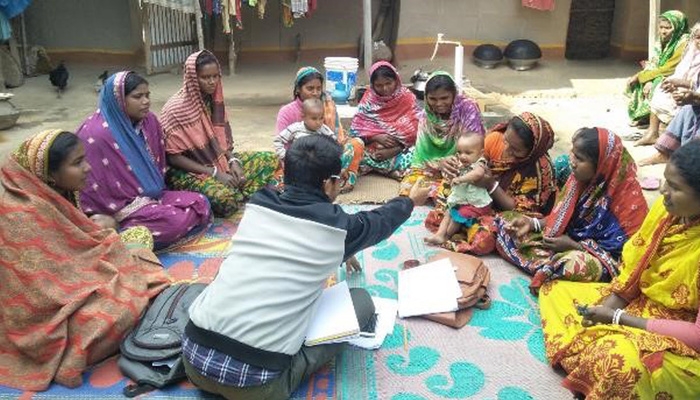

Ministry of Health and Family Welfare (MOHFW) is in the process of implementation of 4th Health, Population and Nutrition Sector Programme (4th HPNSP), for which, the Midterm Review (MTR) is underway. Opinions of the recipients are vital inputs in the MTR process. This assessment is an effort taken by Bangladesh Health Watch, an independent civil society platform, to collect opinions of healthcare recipients, particularly those from disadvantaged and underserved communities, to support the MTR of the 4th HPNSP. Scope of work for the assessment included – (a) Understanding the access to and utilization of government healthcare services, particularly for marginalized people; and (b) Understanding the perception of the recipients on the extent and quality of government healthcare services.
Methodology
An extensive literature review was carried out to understand the context of HNP sector in Bangladesh using “rapid review” method. The main findings were derived from primary data collection using qualitative methodology. A team of multidisciplinary researchers, including anthropologists, health systems expert and physician and public health expert designed and implemented the study. Data collection was undertaken by a team of anthropology graduates. The assessment considered two categories of recipients as respondents – (a) the common citizens or “mainstream recipients” (b) the citizens that were termed as “hard-to-reach and vulnerable” and “marginalised” in getting the public health services, or “disadvantaged recipients”. Marginalised respondents were taken purposively from six different districts of Bangladesh, based on the criteria including geographically isolated (i.e. those living in haor, island chars and Chittagong hilltracts), flatland ethnic minorities, tea garden workers, industrial workers, slum dwellers and low income urban communities. Mainstream respondents were also taken purposively from six unions, each belonging to a different district. Data were collected from both recipients, as well as community people and community leaders. Exit interviews (26) and Focus Group Discussions (FGD) (23) were used for data collection. For triangulation purpose, data was also collected from a few service providers and health managers using methods including Key Informant Interview (KII) (11) and In-depth Interview (IDI) (12). Spot observations (23) and informal discussions were also used for data collection. Thematic and content analysis were undertaken, using Atlas-ti 7.5 to organize the data.
Citizen's Voice